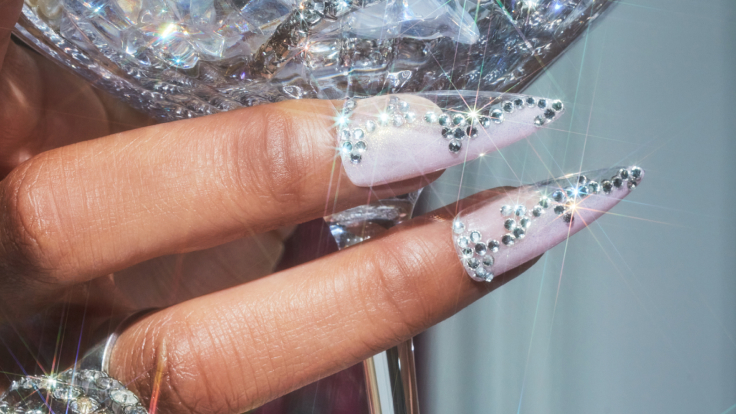Curing Press-On Nails: The Newest Harmful Nail Trend All Over Tiktok
Every now and then tik tok will launch into a new beauty craze - and some of them are truly wonderful, time-saving hacks, but more often than not, the hacks circling the internet are a result of misinformation that can cause long term damage - the latest; curing press-on nails, is no different.
Press-on nails are seen as a salon alternative for a quick and easy on-trend manicure. Traditional application methods for press-ons include glue tabs and nail glue however @che.march shared a video on how to revolutionize press-ons by gel curing them - which allows the press-on nails to last longer.
She begins by using a base bond which she cures for 60 seconds, and then applying a dollip of the base bond on the underside of the press on nail where you would usually apply gue, she sticks the press on nail on top of her nail plate - and again, cures. After shaping them as needed, she applies three coats of top coat on top of the nail and one underneath to ensure that the nails do not move. This works are builder gels have a stronger grip than your average nail glue and allow for better soak-off removal.
This may initially seem harmless, but there is a very specific reason why gel products are intended for trained beauty professionals only. Putting press on gels using UV gels is not safe. UV Light cannot go through a full cover press-on nail that is coloured, tells @Amberthenailwhisperer. In her video raising the warning on the latest trend, she points out that press-on nails need to be absolutely clear, otherwise they will only be partially cured. Over and under-curing can lead to developing severe allergies to gel products.
It is therefore recommended that if you are planning to use press-on nails with gel, you should only use clear nails - these can then be painted over as usual as long as you make sure not to get the builder gel on the skin, and do not use a flash cure lamp to cure.
Moreover, if the nail plate is not cleaned properly prior to the application with alcohol and absent of any bubbles during the curing process, lifting or pockets can occur under the press-on where moisture can become trapped and cause a potential infection or 'greenie,' which is a bacterial infection.

